Why do we think that apart from the Universe there is a Multiverse
Every truly eternal problem is at the same time an eternal mistake; every answer is a reckoning, every discovery is an improvement.
- Otto Weininger
Our best measurements of the distant Universe, outside of our Galaxy, led us to the existing picture of what our Universe does: it expands and cools, while the galaxies fly farther and farther from each other.

But what does this mean for our past?
')
If we expand and cool, it means that in the past we were smaller and not so cold, that is, denser and hotter.
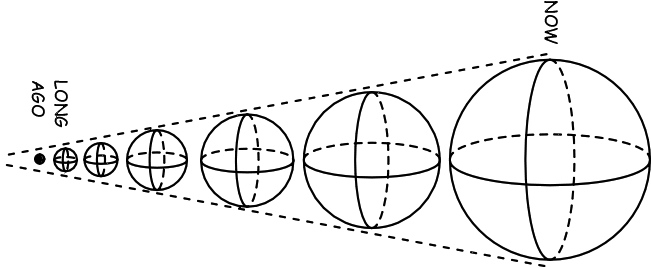
If you try to think like a scientist, you will not have enough knowledge only about what she is doing now. You will want to know - if it expands - then under the influence of what and how quickly. In other words, determine the rate of expansion.
The answer is quite simple: if we choose GR as the theory of gravity, then the rate of expansion of the Universe will be determined by the type of energy dominant in it.

In the relatively recent past, when the Universe was filled with galaxies, stars, planets, and all objects discovered by us, matter, both ordinary and dark, dominated in it most of the time.
And this is how the Universe expands.
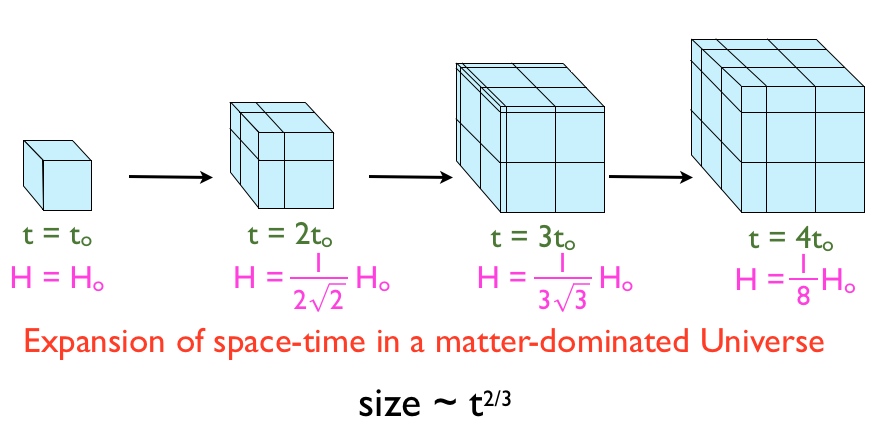
Note that H falls over time. This means that in the past, the Universe was hotter, denser and expanded faster.
But if you get far enough back in the past, since the Universe was denser and hotter, at some point it will be too hot for neutral atoms to form in it. In addition, it is obvious that the radiation energy in the universe was much greater.

Continuing the extrapolation, we come to the conclusion that the radiation energy exceeds the energy of matter. Because of this, the universe will expand in a different way! And how does the Universe dominate in which radiation dominates?

The situation is similar to that where matter dominates, just the numbers change a little. But we cannot go back to arbitrary temperatures and singularities. There are restrictions on the temperature of the Universe in the past, and relic radiation tells us about them.
So what happened before that? What happened to a hot, dense universe filled with matter and radiation?
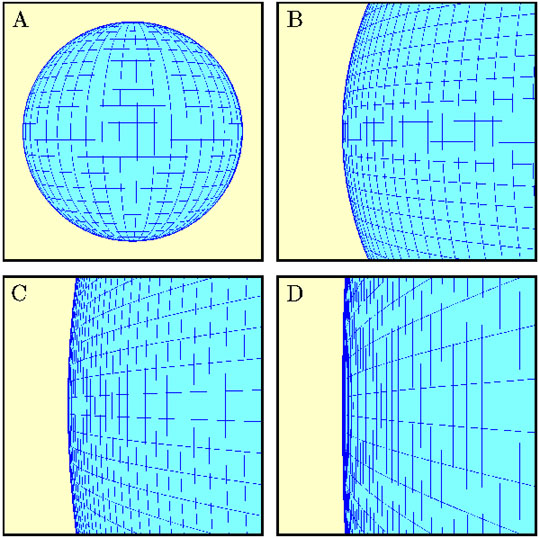
As far as we know, there was a period of inflation. Straightening the Universe and providing homogeneous properties everywhere, cosmic inflation set the initial conditions that led to the existence of the present Universe.
In addition to matter and radiation, vacuum energy can dominate in the Universe (after all, all the energy of empty space does not have to be zero, and it is non-zero today!).
When vacuum energy dominates in the Universe, its expansion history looks completely different.
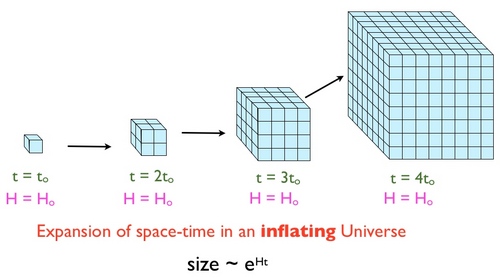
Please note that the expansion rate does not decrease with time! This means that instead of growing according to the law of degrees, the Universe grows exponentially, and very quickly it can stretch out not only much larger than the size you can imagine, but googoly times more than the entire observed Universe!
Perhaps you want to know the size of the unobservable universe. It is very likely that there are parts of the Universe that are more than 46.5 billion light-years distant from us; we just can't see the light coming from them!
So what determines inflation? Let's take a look at the standard inflation picture.
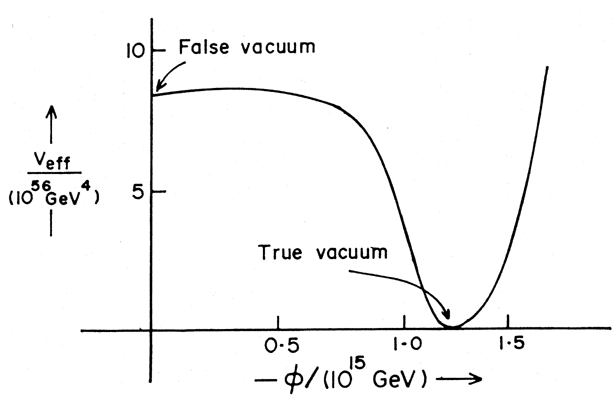
Energy is deposited along the Y axis. In particular, the amount of vacuum energy inherent in space. Obviously, the amount of vacuum energy in today's space is very small: 28 orders of magnitude less than it was during inflation!
If we need the Universe to expand enough to come to a flat and coarsely homogeneous state today, we need it to be in a state of inflation long enough. We need to start when we are on the flat part of the graph above.
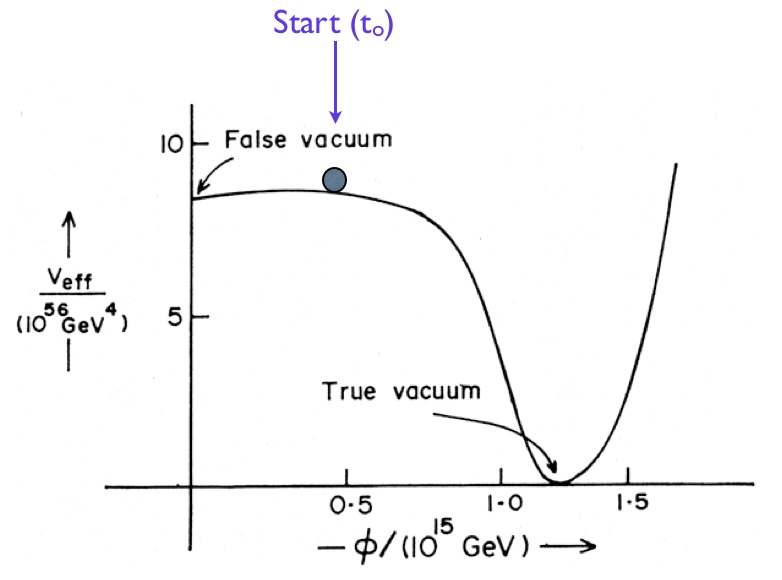
As long as we can slide down the curve slowly enough, we will get enough inflation to make our universe appear. In the future, we will begin to slide into the recess.
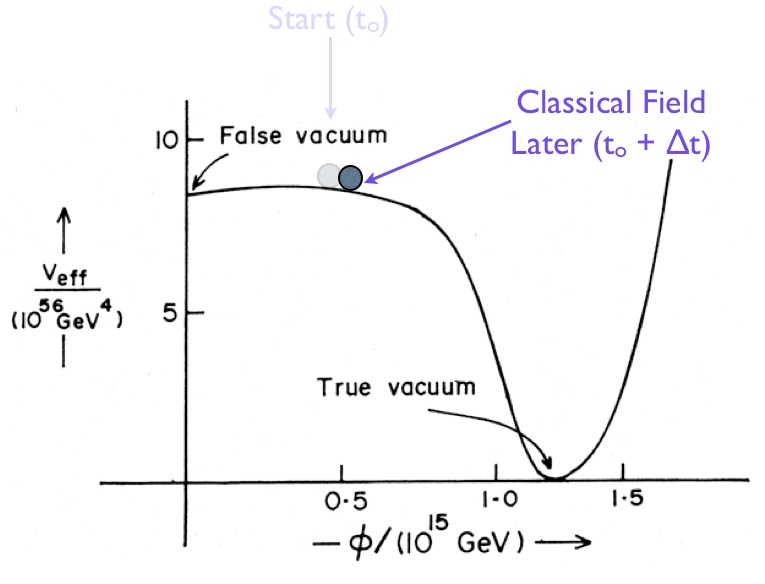
And in the end we fall into it. At this moment, the vacuum energy is converted into matter, radiation, and everything that leads to the Big Bang, which gave rise to our Universe. And if the theory of inflation is right, it definitely happened in our area of the Universe; moreover, it happened specifically 13.7 billion years ago.
But we must remember that the field that led to inflation - whatever it is - should have been a quantum field or particle, like everything else in the Universe.
And what happens to an electron — a well-studied quantum particle — inside what we can study, for example, in an atom? You can measure it and find out its position at some point. But let's wait.
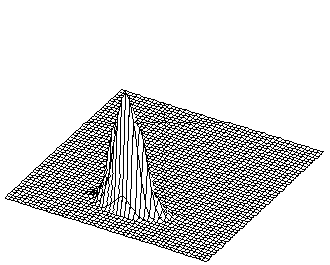
If it is a quantum particle, its wave function propagates with time, and takes a superposition of the allowed states. And how does this relate to our inflation field? What do we get if we let it spread over time too?
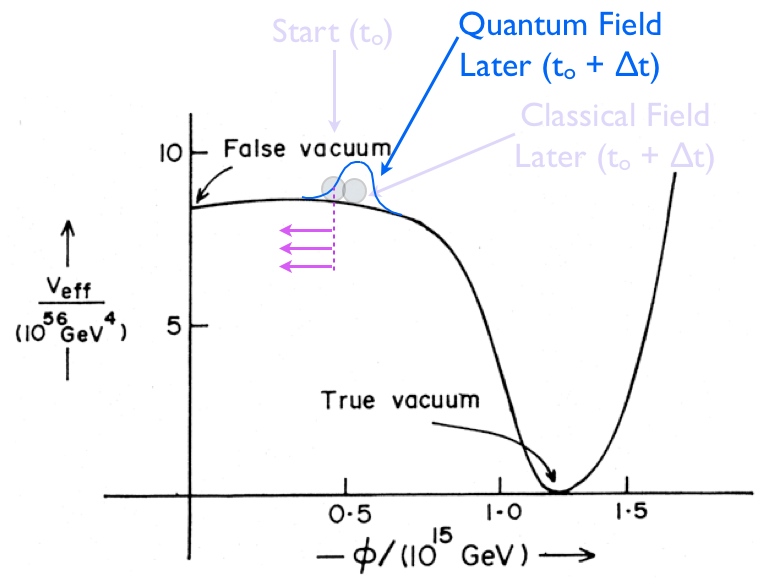
We will get that part of this quantum field, if it moves slowly enough, will spread into the past, where it started, towards the state where it will continue to expand! Remember the picture with the classic inflation, which we quoted earlier?

In this picture, inflation occurs for a while and then ends everywhere at once. But if inflation is a quantum field — and it should be — it needs to be calculated how fast it spreads, how quickly the Universe expands, how fast it rolls down the hill. If it rolls too fast, or expands too slowly, it will not have time to spread to a sufficient number of regions of the Universe. But if it moves slowly, but expands quickly, and spreads fast enough, what do we get?
We will start with the expanding region painted in blue. If the potential is sufficiently close to the failure of the schedule, inflation will end, and we will note this with red X. But if inflation continues, we will leave it blue and create more expanding space-time before checking it again. And that is what we will see.
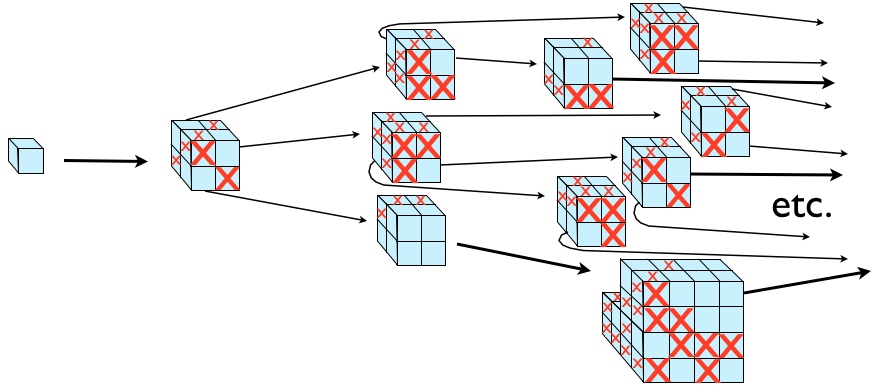
Although at any time in about 50% of the regions of the universe inflation is finished, a sufficiently large amount of it will spread back up the hill, with the result that inflation will last indefinitely . And this turns out to be true for any model of slowly moving inflation!
In other words, there are regions in the Universe that were subjected to inflation in the past, which the energy of a false vacuum turned into radiation and matter, and the history of these parts of the Universe is very similar to ours. But between these regions there are others in which inflation continues, and so on and so forth.
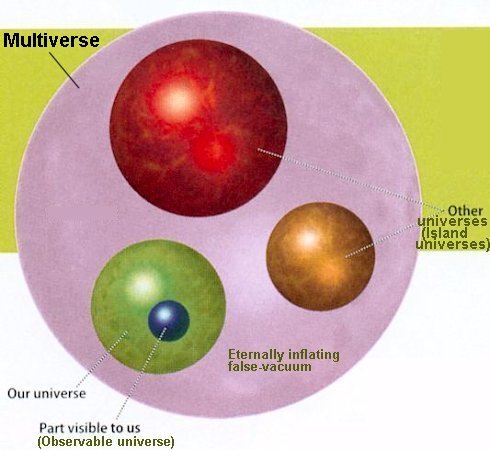
That is why there is not only the Universe, but the Multiverse!
The story I have told is conservative. In this version of it, the fundamental constants in different regions of the multiverse are the same, and in other universes the same laws of physics apply - with the same quantum vacuum, etc. But most people who reason about the multiverse have gone much further.
One can hear ideas about multiple false vacuums, landscapes, connections with quantum gravity, which have appeared in the last few years. Basically, they are generated by the desire to attract what is happening to string theory, and present a set of difficulties , but also many interesting options. Here I will not consider them, but when you hear these words, keep in mind that the above is a common story for them.
And this basic concept, although not complete, is a simple quantum mechanics applied to the best working model of the early Universe. As a result, it turns out that in most regions the Universe will expand forever - this is the Multiverse.
Source: https://habr.com/ru/post/369885/
All Articles